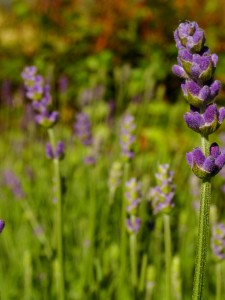
The scent of lavender carries a certain nostalgia for many people. Maybe it’s the smell of grandmas dresser drawers or moms perfume? Happily, lavender is easy to grow, given the right conditions. So, we can recreate that scent memory in our gardens.
If you want to grow lavender successfully, there are a few points to keep in mind. Lavender is native to areas of the Mediterranean, Africa and Asia. In order to keep lavender happy, try to provide conditions similar to its native habitat. Well drained, gravelly soil, and full, hot sun are critical. Drainage is the single most important factor, especially because we have such damp winters. Lavender does not dying wet soil in winter.
The other important factor is pruning. Do not prune lavender at all, if possible. Simply dead head the spent stalks to above healthy foliage in late summer. If plants do outgrow their space, or get leggy, shape them by removing about a third of the soft new growth from the current season. Never prune them back into old wood. Lavender resent this treatment, and may respond by giving up the ghost.
A few Common cultivars and their attributes:
- L. angustifolia ‘Hidcote’: Dwarf English lavender. Named after Hidcote Manor in England. Grows to a foot high, with flower stems to 18″. Deep purple flowers.
- L. angustifolia ‘Munstead’: English lavender. Named after Munstead Woods in England, home of famous garden designer Gertrude Jeckyl. Grows to a foot high, with flower stems to 20″. Flowers are much less violet than ‘Hidcote’, decidedly blue.
- L. x intermedia ‘Provence’: French hybrid lavender. One of the cultivars grown in France for the commercial lavender industry. Touted as being more tolerant of wet feet than others. Tall flower stems reaching 30″.
- L. x intermedia ‘Grosso’: French hybrid lavender: One of the best for cutting. Stems grow to 30″.
